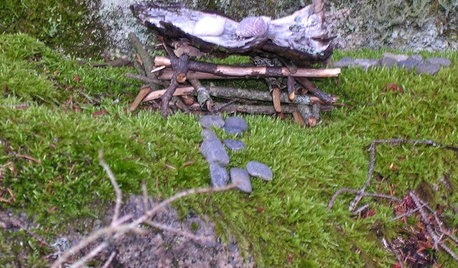2 different looking cukes on the same plant???
dutchess_9
14 years ago
Related Stories

NATIVE PLANTS5 Ways to Keep Your Native Plant Garden Looking Good All Year
It’s all about planning ahead, using sustainable practices and accepting plants as living organisms
Full Story
MOST POPULARSee the Difference a New Back Deck Can Make
A dramatic 2-story porch becomes the centerpiece of this Ohio family’s renovated landscape
Full Story
GARDENING GUIDESInvite Mining Bees to Your Garden by Planting Their Favorite Plants
Look for mining bees (Andrena) pollinating woodland wildflowers in U.S. gardens this spring
Full Story
LIFECondo, Co-op, Townhouse, TIC — What's the Difference?
Learn the details about housing alternatives so you can make a smart choice when buying a home
Full Story
DECORATING GUIDESStaging vs. Decorating: What's the Difference?
Unlike decorating, staging your home isn't about personal style — it's about creating ambiance and appeal for buyers
Full Story
ROOTS OF STYLEArt Deco, Art Nouveau, Arts and Crafts: What’s the Difference?
If the zigzag and swirly designs of the past leave your head spinning, these descriptions will straighten you right out
Full Story
FUN HOUZZSomething a Little Different: Fairy Houses
Miniature abodes crafted for otherworldly creatures capture the imagination
Full Story
DECORATING GUIDESChaise, Divan, Daybed, Settee: What's the Difference?
Seeking the right furniture piece for lounging, sitting or even snoozing? We clear up the confusion in terms
Full Story
DECORATING GUIDESSingle Design Moves That Make All the Difference
One good turn deserves a whole ideabook — check out these exceptional lone moves that make the room
Full Story
MOST POPULAR8 Little Remodeling Touches That Make a Big Difference
Make your life easier while making your home nicer, with these design details you'll really appreciate
Full Story


thefarmguy
digdirt2
Related Discussions
Same friend, different Walmart, different plant... :)
Q
2 different colors on same plant?
Q
Different looking fruits on same plant
Q
Same plant, same day, different exposures
Q
rj_hythloday
riley17
dutchess_9Original Author
digdirt2
rockguy
cyrus_gardner
jrslick (North Central Kansas, Zone 5B)
dutchess_9Original Author
bella_trix
jean001
rj_hythloday
jessicavanderhoff
dutchess_9Original Author
someguyinmaine
Karen Pease
yumamelon
someguyinmaine
yumamelon
weedlady
Karen Pease